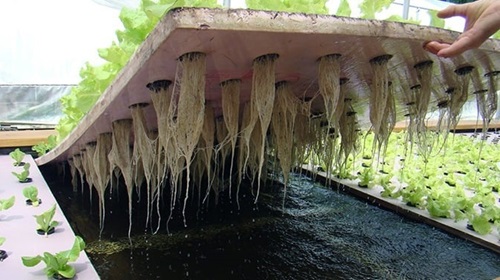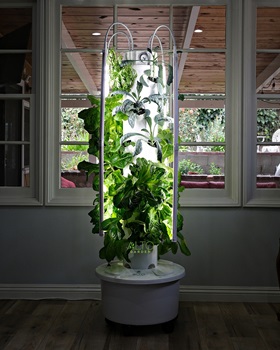Nov 7th 2024
Types of Hydroponic Systems and How They Work
A nutrient-rich solution with water is the common basis used in all hydroponics, a growingly popular technique for growing plants that eliminates the need for soil. There are few different types of hydroponic systems, although the fundamental growth concepts all remain the same. A growing media such as coco-coir, perlite, or rockwool, is used in conjunction with net pots to keep plants in place. Water is then used so the plant roots can absorb dissolved nutrients.
What Are Hydroponic Systems and How Do They Work?
The primary hydroponic technologies all share a soil-less approach to production. They all supply a concentrated nutrient solution and provide the same general benefits: quicker growth rates, more efficiency with water, and a lower risk of pests and illnesses. However, not all hydroponic techniques are made equal.They differ in one major way: how water and nutrients are provided to the plant roots.
When growing in soil you simply add fertilizers to the soil, saturating the roots. Of course, foliar feeding occurs from time to time as well. With hydroponics – nutrients are given directly to the roots in a variety of methods, ranging from suspending the roots in a nutrient solution, intermittently irrigating the roots from above, to regularly flooding and draining the roots from below.
This is how they differ; it all boils down to nutrition delivery. Let's have a look at how this works in a few different types of hydroponic systems.
Deep Water Culture (DWC)
Deep water culture, or DWC for short, is one of the easiest hydroponic methods for beginners to understand. Roots are suspended in a concentrated nutrient solution with DWCs, so these systems also have very little moving components. The majority of DWC systems come with a predetermined number of growth slots, which hold the plants in separate net pots or cups.

These systems continuously oxygenate the water with an air pump and air stone. This results in the ideal ratio of nutrient content to aeration. With the addition of a strong grow light, your roots will always have access to the nutrients and oxygen they require.
The simplicity of usage of these technologies is their true benefit. These are excellent for beginners since all you have to do is make sure the pH is set correctly, the air stone is supplying enough oxygen, and that the hydroponic nutrients are maintained on a regular basis.
The Wick System
The wick system is another straightforward and simple hydroponic system. It needs no energy and has no moving components. Additionally, after all the supplies are obtained, it can be constructed in a matter of minutes due to its simplicity.
The wick technique is quite simple and easy to understand. Through a process known as "capillary action," it employs a wick to provide nutrient-rich water to your plants. This essentially means that the wick, collects water in the reservoir before gradually moving nutrient-rich water up to the roots of your plant, much like a sponge.
Wick systems are often regarded as "passive hydroponics" as they don't have any moving parts, but adding a pump would undoubtedly help your roots get more oxygen.
Hydroponic Towers

These vertical gardens cultivate plants and vegetables by pumping nutrient-rich water to the top of the tower. As the water drips back down it irrigates the plant roots along the way. Water collects at the reservoir below, and is pumped up again to repeat the cycle. With hydroponic towers, you can grow a variety of plants in a neat, easy-to-maintain vertical structure that saves space. A hydroponic tower may be thought of as a customized vertical garden that has an integrated feeding and watering system.
According to research, vertical hydroponic systems can help save up to 95% of water. This is because of its closed-loop watering system which recycles water up and down the tower. Because hydroponic towers utilize interval-based watering, they also introduce aeroponic growing methods. This hydroponic technique allows roots to be exposed to both water and air. For example – in a hydroponic tower, plants are irrigated for 15 minutes per hour, for 14 – 16 hours a day, providing plant roots with excellent air exposure for higher oxygen uptake.
If you are looking for a good option then The ALTO Garden GX Hydroponic Tower Garden is a great choice. Designed for convenience, it employs both hydroponic and aeroponic techniques which allow you to grow indoors without the need for soil.
Ebb and Flow (Flood and Drain)
In the hydroponic Ebb and Flow method, plants are cultivated in a tray or container that is filled with a growth media, such as coconut coir or perlite. A nutrient-rich solution is periodically poured into the tray, which is then drained back into the reservoir. Growing bigger plants, such as cucumbers and tomatoes, is best done with Ebb and Flow. Because the tray's dimensions and form may be changed to accommodate various plants, it is also incredibly adjustable. A pump and timer are necessary for Ebb and Flow in order to keep the water flowing.
Nutrient Film Technique (NFT)
A thin layer of nutrient-rich water is continually poured over plant roots using the Nutrient Film Technique (NFT). With their roots hanging in midair and having ample access to oxygen, plants are usually cultivated in sloping troughs or channels in an NFT system. The fertilizer solution is circulated by a pump and runs in a thin stream or film over the plant roots.

Commercial growers use NFT systems because of their ability to handle several plants and their modular architecture, which makes large-scale production simple. Fruits like strawberries and light plants like lettuces, herbs, and leafy greens are the ideal candidates for NFT systems. More support is needed for heavier fruiting plants, such as cucumbers and tomatoes, to keep them from toppling over.
All things considered, NFT systems are a well-liked option for both commercial and household gardeners; nevertheless, they do need close supervision and administration to guarantee that the plants get the proper quantity of water and nutrients. The plants might not flourish if the nutrient solution is not correctly balanced or if there is an interruption in the solution's flow.
Final Thoughts
Hydroponic technology has provided alternative methods to modern agriculture. This innovative and popular agricultural approach has transformed our connection with food and production. This sustainable and environmentally friendly method of farming continues to develop significantly around the world. With faster harvests and greater yields, hydroponic gardening allows us to produce crops more efficiently, conserve resources, and boost harvests.




